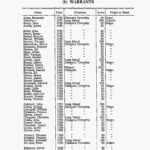Upon surviving the Middle Passage, Joseph would have arrived in Charleston, South Carolina, one of the major slave ports in the American colonies. Here, he would have been sold at an auction to a plantation owner in the Goose Creek area, a small but economically significant settlement just outside Charleston. Goose Creek was a hub for rice and indigo plantations, where enslaved labor was essential to the colony’s economy. The climate and geography of South Carolina were ideally suited for rice cultivation, but it was grueling, labor-intensive work that required extensive knowledge of water management and planting techniques—skills that many enslaved Africans brought with them from regions like West Africa.
Life for Joseph “Sambo” Cromwell as an enslaved person on a plantation in Goose Creek would have been harsh and unforgiving. He would have been housed in a basic, one-room cabin constructed of wood with a dirt floor, located near the plantation fields but away from the main house where the enslaver and their family lived. The cabin would have provided little protection from the elements, and the living conditions were often overcrowded and unsanitary. Enslaved people worked from dawn until dusk under constant supervision, with little time for rest or personal autonomy. Punishments for disobedience or perceived laziness were severe and could include whippings, beatings, or even death.
During the American Revolutionary War, the Southern colonies became a contested battleground. In 1779, Joseph “Sambo” Cromwell, his wife Philis, and their children Anthony and Mary managed to escape from their enslaver, possibly a man named Nathaniel Crumwell, who may have been connected to the Goose Creek area. It is likely they fled during the confusion and chaos of the war when the British forces were recruiting enslaved Africans with promises of freedom for those who would join their cause. This is supported by proclamations like Lord Dunmore’s Proclamation (1775) and the Philipsburg Proclamation (1779), which promised freedom to enslaved people who fled their Patriot enslavers and joined the British lines.
It is unclear exactly how Joseph and his family traveled from South Carolina to British-occupied New York, but it is plausible they could have followed the movement of British troops or traveled by boat along the coast. This journey would have been perilous, as they would have had to avoid capture by Patriot forces and navigate through dangerous terrain or waters. This is speculative, but it represents the most likely route for them to have reached safety under British protection.
By 1783, the British were preparing to evacuate from New York following their defeat in the Revolutionary War. Joseph “Sambo” Cromwell and his family were recorded in the Book of Negroes, a document that listed the names, ages, and details of Black Loyalists who were granted passage to British territories. The entry described Joseph as an “ordinary fellow” aged 44 and his family, including his wife Philis and their children. They were recorded as having come from Goose Creek, South Carolina.
In November 1783, Joseph and his family boarded the ship “Joseph,” which was part of a fleet evacuating Black Loyalists to Nova Scotia. The journey was treacherous, and the ship was forced to reroute to Bermuda due to a storm. After months of delay, they finally arrived in Annapolis Royal, Nova Scotia, in April 1784.
Life in Nova Scotia (1784 – 1796)
Upon arrival in Nova Scotia, Joseph “Sambo” Cromwell and his family settled in **Digby County**, one of the several areas where Black Loyalists were resettled. Life in Nova Scotia for Black Loyalists was extremely difficult. While they had been promised land and support, the reality was quite different. Black Loyalists were given the least fertile and most difficult land to cultivate, and they faced constant racial discrimination from both White Loyalists and local government officials.
In Digby County, Joseph likely lived in a rudimentary wooden cabin, similar to the housing he experienced in South Carolina but adapted to the harsher climate of Nova Scotia. Food was scarce, and many Black Loyalists had to rely on fishing, hunting, and growing small garden plots to survive. In 1786, after the death of his first wife Philis, Joseph married Jane Miller, and they continued to raise their family in Digby.
Joseph and Jane became part of the local community, joining the Trinity Parish Church of Digby. Their children, including their daughters Elizabeth and Hannah, were recorded as “molatto” in the church books, reflecting the mixed-race and multicultural nature of the Black Loyalist community in Nova Scotia.
Final Years and Legacy (1796 – 1829)
Joseph “Sambo” Cromwell continued to live in Digby County, Nova Scotia, throughout the late 18th and early 19th centuries. His life in Nova Scotia remained challenging, but he was part of a community that struggled together for survival and recognition. He likely died between 1827 and 1829 in Weymouth, Nova Scotia.






















